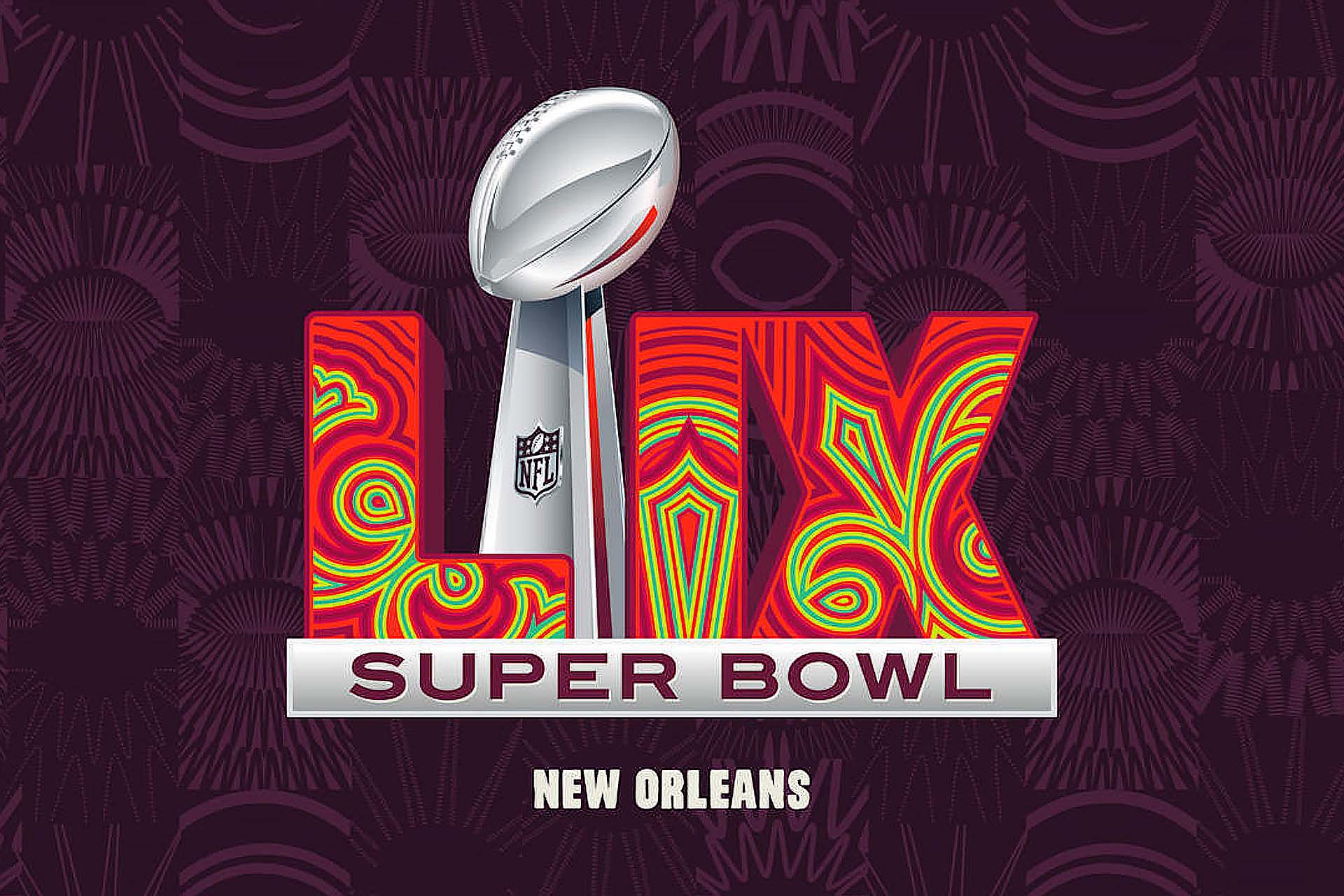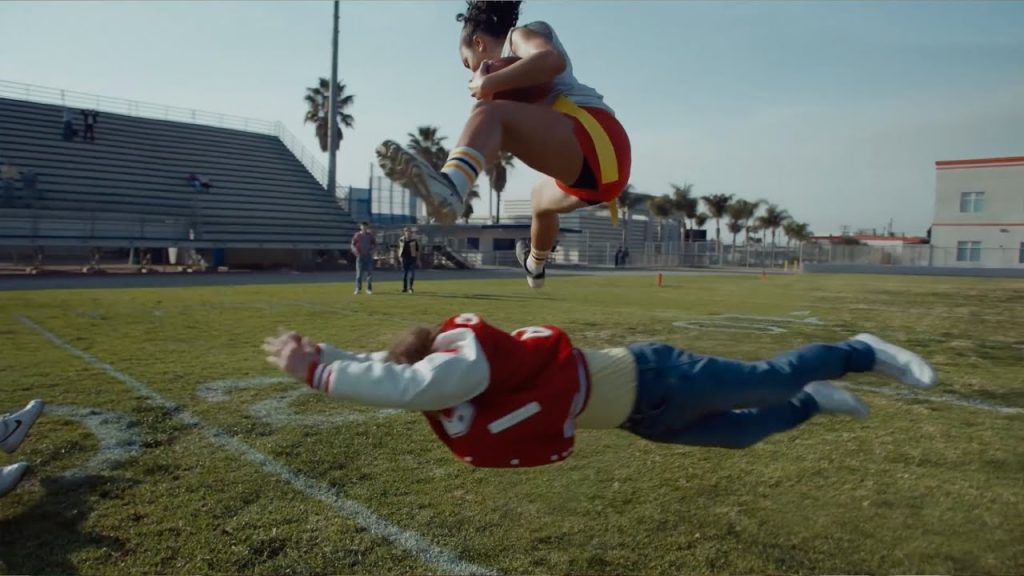DENNIS JENDERS
BLUE COLLAR, BORN & BRED. SO SNAZZY ART. SCIENCE. MISCHIEF. SINCE 1976. THINK. PLAN. DO.

Review: Super Bowl LIX Commercials
The cheers have faded, the confetti has settled, and Super Bowl LIX is in the books as the Philadelphia Eagles pummeled the Kansas City Chiefs in a decisive 40-22 victory in New Orleans.
But for many, the game itself was merely the backdrop to the true spectacle – the commercials. The Super Bowl remains the grand stage where brands battle for attention, but this year’s crop of ads leaned heavily into safe, risk-averse plays, deploying humor, nostalgia, and emotion while largely avoiding bold creative swings.
According to USA Today, Fox initially priced 30-second ads at $7 million, consistent with the past two years. However, due to high demand, AdAge reported that some slots surpassed $8 million, reflecting the premium brands place on this marquee moment.
As I reflect on the standout ads, I once again turn to Mark Pollard’s Four Points Framework to uncover the strategic underpinnings that made these campaigns resonate.
Key Themes
Nostalgia – The Comfort of the Familiar
A familiar theme, brands once again leaned heavily on nostalgia this year. Budweiser brought back its iconic Clydesdales, Hellmann’s reunited Meg Ryan and Billy Crystal for a When Harry Met Sally parody, and Instacart’s ad showcased a parade of familiar mascots, including the Jolly Green Giant, the Pillsbury Doughboy, and Mr. Clean doing his best impression of Tom Cruise running.
Jeep’s ad with Harrison Ford continued the nostalgic trend, featuring the legendary actor delivering a reflective monologue about freedom and personal choices, concluding with a nod to his surname: “This Jeep makes me happy, even though my last name is Ford.” The spot felt authentic, if not long. The world needs more Harrison Ford and more Morgan Freeman.
Humor – Playing It Safe, With a Few Laughs
Comedy has long been a staple of Super Bowl advertising, and while this year’s ads didn’t take major risks, they still delivered entertaining moments. Ben Affleck’s ever-growing Dunkin’ antics and Walton Goggins selling absurd Goggins Goggle Glasses for GoDaddy stood out as examples of humor done right.
Rather than boundary-pushing satire, brands stuck with playful, lighthearted moments that may have favored broad appeal over pushing creative boundaries.
Facial Hair – An Accidental Motif
A notable sub-theme within humor – facial hair. Who knew we needed more hair in our food as Eugene Levy’s over-the-top mustachioed turn for Little Caesars as his eyebrows steal the scene – literally flying off his face.
And Pringles elicited one of the bigger laughs for our watch party as Adam Brody responded to “just blow in the can,” calling upon the iconic mustaches of Nick Offerman, James Harden, and even Mr. Potato Head.
Emotion – The Power of Impactful Storytelling
While nostalgia and humor dominated, several brands aimed to connect emotionally. While some succeeded, others fell short of their previous impactful storytelling.
Google continued its tradition of humanistic storytelling with the “Dream Job” ad, featuring a father describing his parenting experience in job interview terms. Compared to previous campaigns this year’s spot lacked the same impact for me.
Dove addressed the issue of young girls dropping out of sports due to body image concerns in their “These Legs” commercial. Featuring a 3-year-old girl running joyously to Bruce Springsteen’s “Born to Run,” the message was strong, but also didn’t quite reach the emotional heights of Dove’s past campaigns for me.
While Google and Dove may have been victims of their past success, four of the most memorable ads of the night leaned into deep emotion. Lets get to my favorite commercials of Super Bowl LIX.
The Winning Spots
The NFL delivered two particularly poignant ads. The first, “NFL Flag 50,” aired immediately after halftime and paid tribute to the evolution of girls’ high school sports.

Rewinding back to 1985, where Liberty High School and U.S. Girls’ Junior National Team flag football player Ki’Lolo Westerlund took on the ‘Chads’ and ‘Brads’ of the world. While online sentiment was mixed I loved the direct, unapologetic approach along side appearances by NFL players and legends, including Justin Jefferson, Myles Garrett, and Marshawn Lynch.
- Problem: Despite increasing participation, women’s sports, particularly flag football, still lack mainstream recognition and equal support.
- Insight: Many high school and young female athletes don’t see themselves represented in the sports world, making it harder for them to feel like they belong.
- Advantage: The NFL has the platform and influence to normalize flag football for girls by showing real athletes and their journeys.
- Strategy: Use a nostalgic, time-jumping narrative to highlight the evolution of flag football for girls, showing how far things have come while reinforcing the NFL’s role in making it a high school varsity sport.
The NFL scored another win in the second quarter with “Somebody.” For someone considering what I could give back through an organization like Big Brothers Big Sisters, the spot hit the right tone as it emphasized the importance of mentorship and support in helping youth realize their potential.

I absolutely love the rhythm of the ad and it had me saying “I am somebody” along side of Demario Davis, Arik Armstead, and Adam Thielen and the kids across New Orleans.
- Problem: Many kids lack strong mentorship and opportunities that could help them achieve their full potential.
- Insight: Every child has the potential to succeed, but they need someone in their corner to believe in them and guide them.
- Advantage: The NFL’s influence extends beyond the game and has the ability to drive meaningful change in communities and inspire future generations.
- Strategy: Show real NFL players mentoring kids, emphasizing that success isn’t just about talent, but about having someone who helps pave the way.
Rocket Mortgage delivered a standout favorite with their “Own the Dream” ad. What started as a relatable commercial featuring a young couple envisioning their perfect home, only to face obstacles in the competitive housing market, evolved into something much bigger.
It was also unexpected for the brand as my watch party were surprised by the reveal. And, instead of just ending the ad, Rocket Mortgage pulled off an unprecedented Super Bowl moment – an in-stadium singalong of John Denver’s Take Me Home, Country Roads making it one of the more memorable ads of the evening.
- Problem: Homeownership feels increasingly out of reach for many Americans due to financial barriers, competitive markets, and rising costs.
- Insight: The idea of “home” is more than just a transaction—it’s deeply emotional, and people want to believe in the possibility of owning their dream home.
- Advantage: Rocket Mortgage provides solutions that help make homeownership more accessible.
- Strategy: Transform and transcend the barriers of home buying, and linear TV, to help Americans own their dream.
Pfizer delivered a true “Knock Out” punch with a commercial that packed both emotion and energy, featuring a young boy battling cancer who envisions himself as a boxer, triumphing over his illness.
Perhaps it was the iconic voice of Michael Buffer or the jamming track of LL Cool J’s 1990 hit Mama Said Knock You Out that initially drew me in. But beyond the engaging visuals and heart-pounding intensity, the ad delivered an important message about Pfizer’s commitment to achieving eight major cancer breakthroughs by 2030.
- Problem: Despite medical advancements, cancer remains one of the most feared and life-altering diagnoses, and many people feel powerless in the face of it.
- Insight: A cancer diagnosis is often framed as a fight, and patients – especially children– see themselves as warriors battling the disease.
- Advantage: Pfizer is at the forefront of cancer research, with a strong commitment to achieving eight major cancer breakthroughs by 2030.
- Strategy: Use a powerful boxing metaphor to position Pfizer as a champion in the fight against cancer.
“Big Pharma” continued to deliver as Novartis’ breast cancer awareness ad “Your Attention Please” took an unexpected yet clever approach by leveraging the male gaze to direct attention to an important message.
The provocative approach filled the screen with breasts for 30 seconds before confronting the viewer with an unexpected shift and it’s intention to raise awareness of breast health and early detection.
It was a winner in the room and beyond as it did something nearly impossible to do – break through the clutter of Super Bowl to deliver a critical public health message.
The spot was in stark contrast to the two spots that featured a true hot mess, Alix Earle. Carl’s Jr. dated approach to sex appeal was unusually gratuitous. Poppi’s ad was a bit more subtle, but it still felt like they were putting Earle’s body on display.
- Problem: Breast cancer awareness messaging is often ignored due to over saturation.
- Insight: People tend to avoid difficult health topics unless they are confronted with something attention-grabbing and provocative.
- Advantage: Novartis can leverage its medical authority and research credibility to reframe the conversation in a fresh, impactful way.
- Strategy: Use an unexpected and slightly provocative approach to break through ad fatigue and ensure the message lands.
Top Three Super Bowl LIX Commercials
To kick off the countdown to my top three ads, a special nod goes to Angel Soft, whose halftime countdown spot, The Big Game Potty-tunity, was a surprisingly sweet moment. The soft, heartwarming nature of the ad was a delight, even if – let’s be honest – most people weren’t about to finish their business in 30 seconds.
#3 – OpenAI’s Super Bowl Debut
OpenAI introduced itself to everyone that tuned-in with a :60 debut that placed it alongside and on the timeline of human achievement.
It was a particularly bold opening statement. Online sentiment, and the ad community, criticized it for the lack of product messaging but I think new CMO Kate Rouch was deliberate in avoiding product features or the mention of artificial intelligence.
I was captivated by the stunning visuals that follows it’s brand relaunch. The room was also tuned in as friends weren’t quite sure what they were witnessing. Reinforcing my earlier point, this wasn’t about functionality – it was a branding moment, and a significant one at that.
OpenAI has now cemented itself in public consciousness, proving that AI will be omnipresent in our lives. While the ad may not have landed a direct message, it signals that visual design language will be a key part of AI’s cultural acceptance moving forward.
- Problem: AI remains abstract and intimidating to many consumers, making it difficult for people to grasp its everyday impact.
- Insight: People engage more deeply with technology when it is visually compelling and framed as an intuitive part of their world rather than an unfamiliar, futuristic concept.
- Advantage: OpenAI is at the forefront of innovation and human ingenuity.
- Strategy: Create a branding moment rather than a feature-driven showcase, celebrating the next step in human achievement.
#2 – Disney’s Scores an Unlikely Moment
The unexpected winner in a sea of bland ads was the pre-game spot for Disney’s Lilo & Stitch movie. The mischievous blue alien appeared on the field, running around as the field crew tried and failed to wrangle the little guy.
The broadcast integration felt rather seamless and fit perfectly with Stitch’s character, making the moment both entertaining and immersive. I found it to be a delightful surprise that managed to stand out in an otherwise predictable advertising lineup.
- Problem: Reviving a beloved franchise without making it feel like an unnecessary or forced nostalgia cash grab is a major challenge.
- Insight: Fans want nostalgic properties to retain their original charm while still feeling fresh and immersive in today’s entertainment landscape.
- Advantage: Disney has mastered cross-platform storytelling, and Stitch’s mischievous character is uniquely suited for unexpected, playful integrations that feel fun rather than forced.
- Strategy: Instead of simply running a trailer, have the mischievous Stitch run on the field to turn a promo into an unexpected, immersive moment.
#1 – Nike Returns to its Winning Way
Nike’s long-awaited return to the Super Bowl ad stage, it’s first in nearly three decades, was a resounding success. With a shift in strategy under new leadership, the brand has been recalibrating its messaging since last summer’s Olympics in Paris. The new platform challenges what it really takes to win—not just in sports, but in life.
Narrated by Grammy winner Doechii, the black-and-white film was cranked up to full intensity, set to Led Zeppelin’s “Whole Lotta Love.” Featuring an all-star lineup of top female athletes, including stars like Caitlin Clark, A’ja Wilson, and Sabrina Ionescu, Alexia Putellas, and Sha’Carri Richardson – Nike celebrated all the ways women continue to prove their critics wrong.
These women, and their leagues, are redefining what it means to be successful athletes and personalities as they shatter records and expectations.
And while Nike has faced backlash over its maternity leave policies, its Super Bowl ad recommitted to women and women’s sports in a bold and unapologetic way.
“You Can’t Win, So Win” perfectly captures the undercurrent of struggle and triumph in women’s sports today. Women’s leagues are growing, funding is increasing, but there are still skeptics—many of them likely watching the NFL. And yet, here these women are, winning anyway. Let’s keep celebrating that.
- Problem: Women’s sports have made major strides, yet many still question their legitimacy, particularly within male-dominated audiences.
- Insight: Female athletes continue to face dismissive attitudes and harsh expectations about how they should act.
- Advantage: Nike has built its brand on challenging norms and championing athletes, allowing them to make a powerful statement that shifts perceptions while reinforcing their legacy.
- Strategy: Perfectly capture the paradox of women in sports: they are told they can’t compete, yet they keep proving they can. So, you know, WIN.
Until next year – when AI might be writing and starring in the commercials themselves – here’s to another season of advertising spectacle at its finest.
